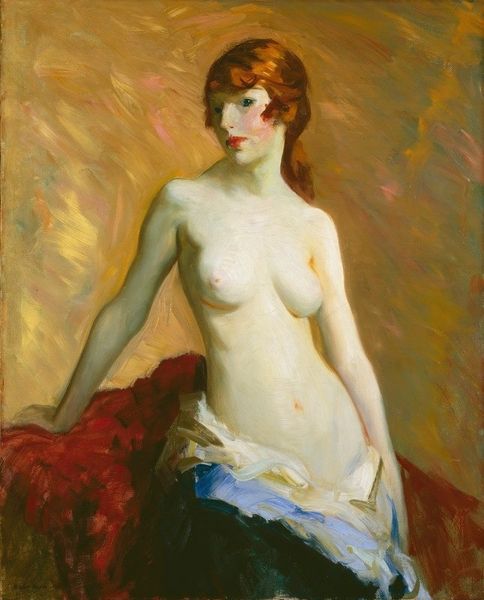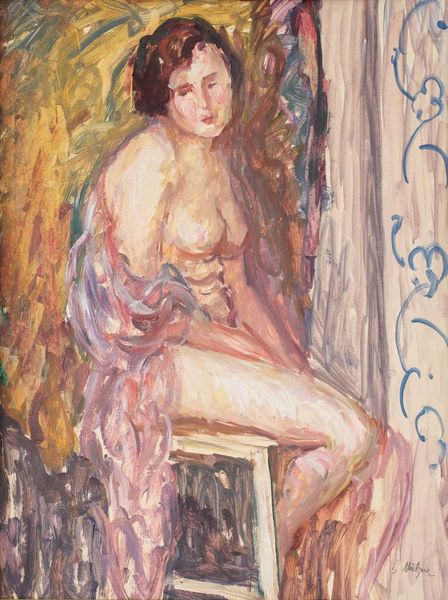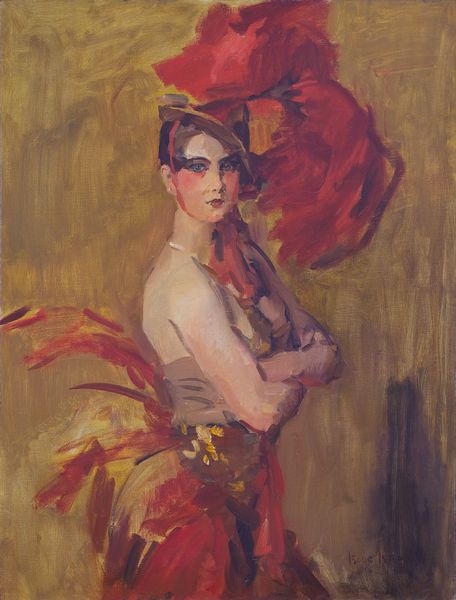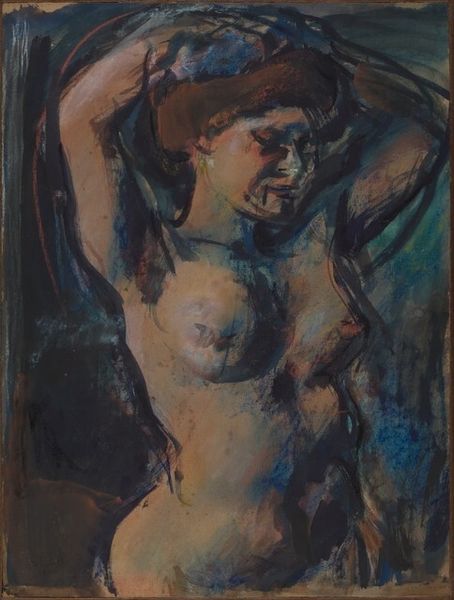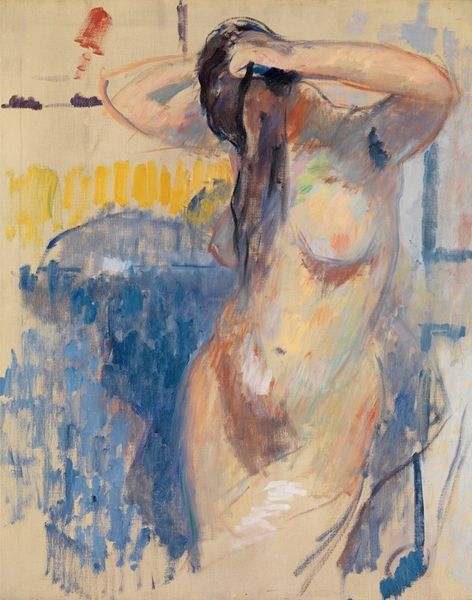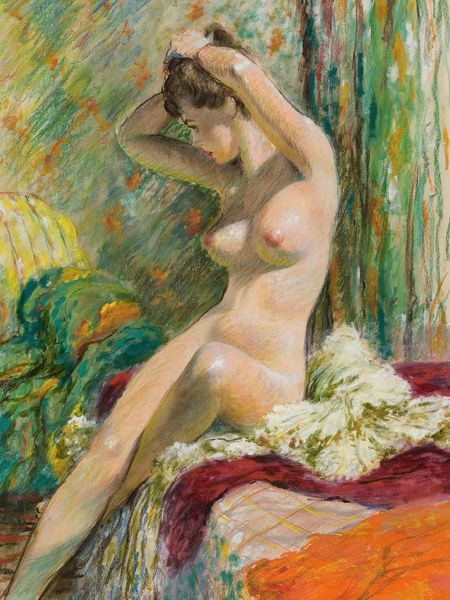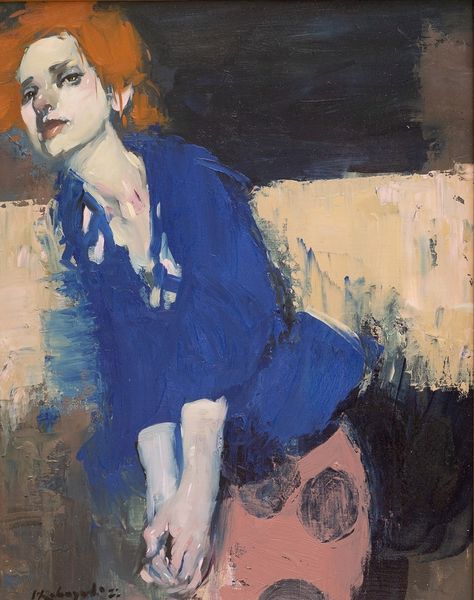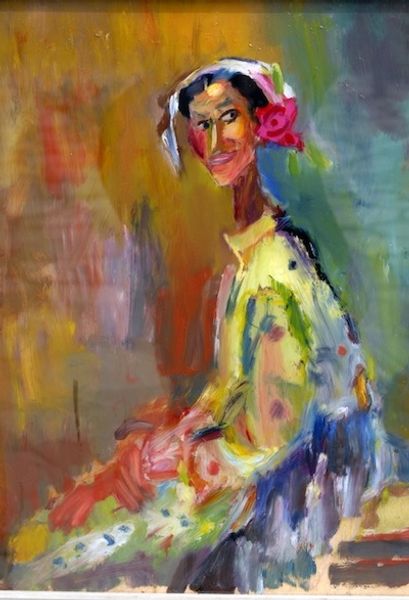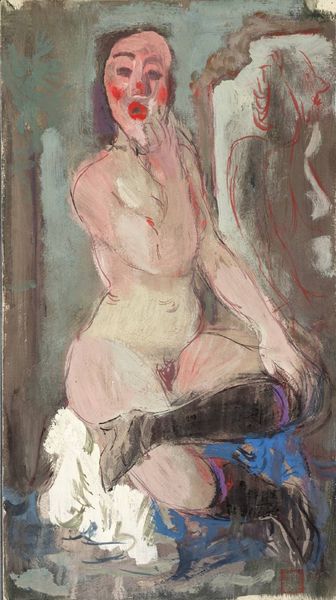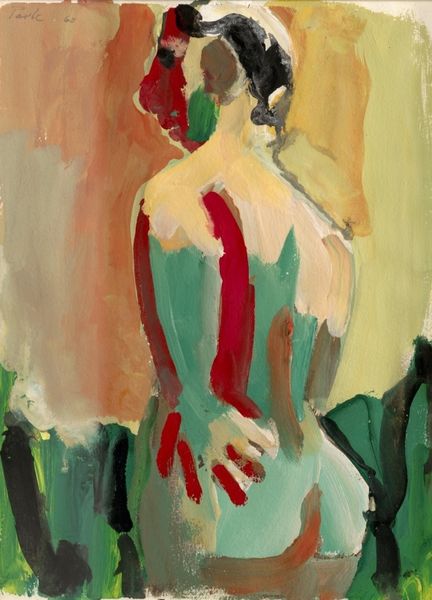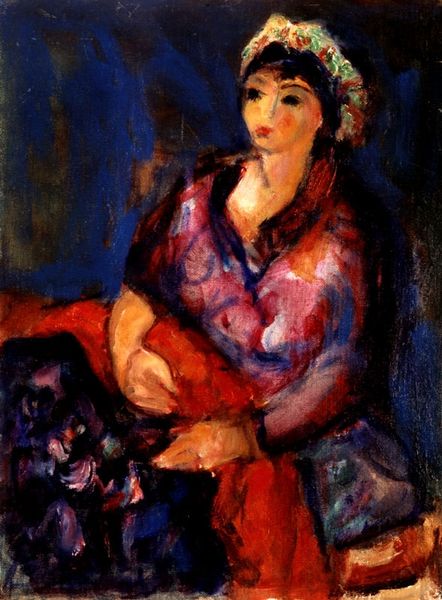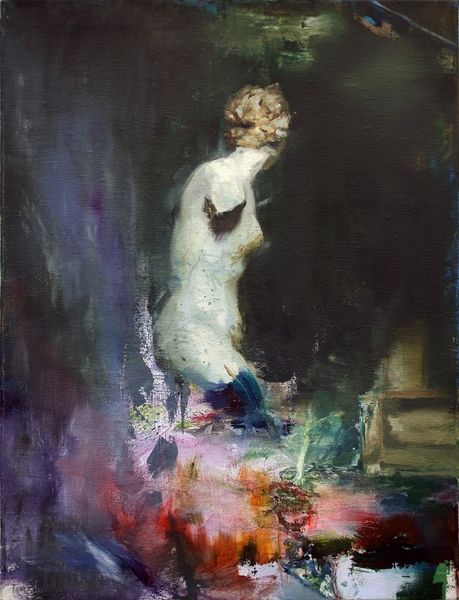
Copyright: Alexander Bogen,Fair Use
Editor: We’re looking at "Woman in Blue," painted by Alexander Bogen in 1981. It’s an oil painting with strong, visible brushstrokes. I find the color palette quite striking, yet something about her face is very haunting. How do you interpret this work, especially given its historical context? Curator: Bogen's piece sits interestingly at the tail end of modernism, when movements like abstract expressionism and neo-expressionism were hugely influential. Consider how museums and galleries in the early 1980s were beginning to canonize these styles, making statements about what 'counted' as important art. Do you see how this piece both embodies and perhaps subtly critiques the neo-expressionist trend? Editor: I can see the link, especially in the raw emotion conveyed and the somewhat distorted figure. But is the figure itself also a statement? Is the way that woman is presented supposed to represent anything, or critique something in terms of female portrayal? Curator: Absolutely. The depiction of the female form is never neutral, particularly when situated within art history. Nudity, even obscured as it is here, always carries a loaded history of power, objectification, and social expectations. Ask yourself: what political implications might arise from this work within 1980's social discourse? Editor: That’s fascinating. So, while on the surface, it might seem like a simple portrait, it’s actually engaging with much broader social and historical issues around art and representation? Curator: Precisely. Bogen uses the visual language of expressionism, which, by that time, was becoming institutionalized, to engage in dialogues concerning female identity and the art world. Editor: I will definitely keep that in mind while studying art history. Thank you. Curator: My pleasure! Reflecting upon these connections really deepens one's understanding.
Comments
No comments
Be the first to comment and join the conversation on the ultimate creative platform.
